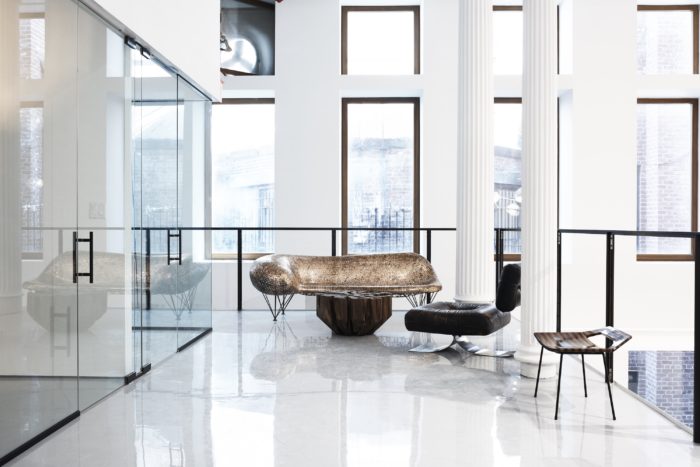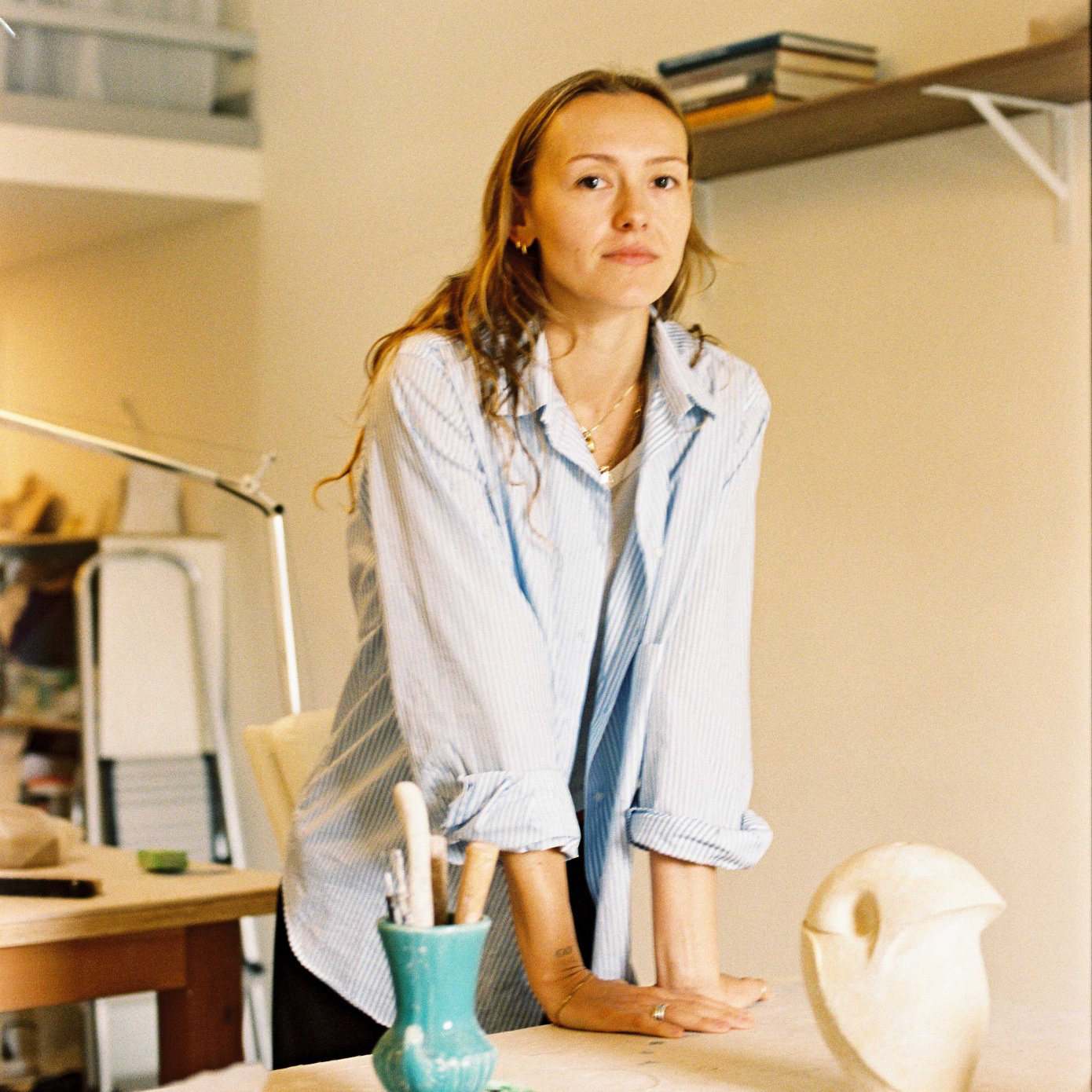
“We’re at a turning point in the design world,” says dealer Evan Snyderman at the gallery and offices of R & Company, a design mecca he runs with his partner Zesty Meyers in New York’s Tribeca. “Even the fine art world is discovering design.” A new 8,000-square foot gallery on White Street is an illustration of that growth—and represents a big wager on the future.
A pair of dynamic and highly respected New York design dealers, Meyers and Snyderman have climbed to their capacious new digs over some 20 years, starting with a stall at a Chelsea flea market. Along the way, they have aimed to knock down perceived barriers between design and fine art, and between the commercial and the scholarly.
“We’re a hybrid gallery and institution,” says Meyers, who’s seated at the duo’s original 2,500-square-foot Tribeca gallery. The space has become a beacon for the newly initiated and longtime collectors alike with regularly changing exhibitions, some organized by guest curators and often accompanied by catalogues—all supported by a staff that’s now 26 strong.
“A few years ago you had to stay on your side of the fence,” Snyderman says. But no longer. “We’ve followed the design of the art galleries.” Rather than simply selling their wares, they assist in producing the work and help develop the careers of the designers they represent.
As a testament to their success in gaining turf in the fine art world, R & Company has exhibited at major art fairs like the Armory Show, Expo Chicago and Fog Art and Design. Another demonstration of their bona fides: they’ve organized exhibitions that have traveled to museums nationwide.
One of those is the 2012 show “Wendell Castle: Wandering Forms—Works from 1959–1979,” devoted to the late American furniture designer who tested the boundaries between art and design. Snyderman co-curated the show along with Alyson Baker, the director of Connecticut’s Aldrich Contemporary Art Museum.
“The Aldrich does not regularly mount design exhibitions,” says Baker. “This was a way to acknowledge Castle as a sculptor in a space usually devoted to younger artists. I saw how inspirational he could be in giving them permission to be craftspeople and designers as well as artists.”
Other critics, scholars and collectors are singing in the same choir as Baker. “What a good art gallery does is to place its artists in museum programming and collections,” says Glenn Adamson, senior scholar at the Yale Center for British Art. “Their success in doing so is what places them at the upper echelon of design dealers.” R & Company has had its artists’ work acquired by institutions from the Rhode Island School of Design Museum of Art to the San Francisco Museum of Modern Art.
Meyers and Snyderman built the foundation for that level of distinction in their mid-’90s flea market days, when the duo committed to traveling to locales like Scandinavia and Brazil to discover lesser-known designers and cultivate a market for them. They were among the first to champion figures like Swedish designer and architect Greta Magnusson- Grossman and Brazilian mid-century furniture maker and designer Joaquim Tenreiro, and have proceeded to represent the estates of figures like Castle.

“They made their greatest contribution in introducing South American designers to the US in a significant way,” says Adamson. “But while their approach is grounded in a hardcore commitment to mid-century design, by showing a contemporary group like Jeff Zimmerman, Katie Stout and the Haas Brothers, they introduce the contemporary inheritors of that tradition.”
For their part, Stout and the Haas Brothers are thrilled to appear in that context—and at the new gallery. Stout, 29, works playfully in sometimes risqué forms. One mirror is wedged between the upward-thrust buttocks of a ceramic female figure; another such figure forms a lamp, its cord emerging from her genitals. “Zesty and Evan work with people who are radical in their fields,” she says.
“Evan and Zesty can spot passion,” says Simon Haas, 33, who works in partnership with his twin brother, Nikolai. “They have an eye for things that are underappreciated.” The Haas Brothers create furniture, carpets, fanciful furry creatures and dazzling ceramics. They’re champing at the bit to work in the new gallery. “We’ve come up with, like, six different shows already,” says Nikolai.
Designing the new facility is architect Kulapat Yantrasast, principal at wHY, a firm with numerous art galleries and museums to its name. Enter the 1869 structure and you’re greeted with cast-iron Corinthian columns that soar to a 16-foot ceiling. Proceed to the rear and you’ll come upon a 45-foot atrium extending down three stories. “This is what sold us on the space,” says Meyers, who promises that the marble staircase will be a moment in itself. One floor down will be a library housing the duo’s archive of about 10,000 objects; the combination of gallery and library allows for “a complete ecosystem,” says Yantrasast. “I don’t think there’s anything like this building in the design world,” he says. “They went all out.”
“Our designers will no longer be limited in terms of what they can create,” said Meyers with a gleam in his eye during a recent site visit, amid the buzzing of saws and workmen coming and going. It’s telling that Meyers’s promise for the space echoes the language of religious art.
“Here,” he says, “our designers’ work can take on the status of icons.”




